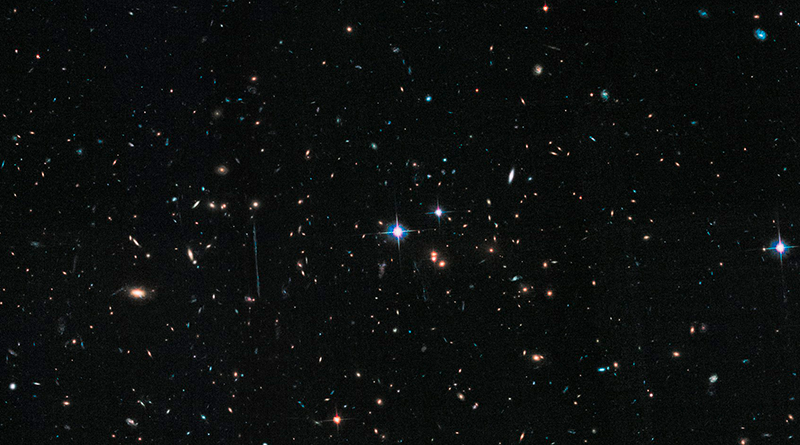The rotation curve of the Milky Way confirms the existence of dark matter
Observations from the European Gaia satellite refute a controversial alternative theory and confirm the presence of an invisible component that makes up most of the mass of the Universe: dark matter. This is revealed in a study led by Alain Blanchard, professor at the University of Toulouse within the Institute for Research in Astrophysics and Planetology (IRAP-OMP, CNES/CNRS/UT), published in Astronomy & Astrophysics on October 15. These results, obtained thanks to measurements of unparalleled precision, reignite the quest to unravel the mystery of this elusive matter.

For several decades, dark matter has been one of the greatest mysteries of modern astrophysics. This invisible component is thought to make up around 85% of all matter in the Universe, but its nature remains stubbornly mysterious. No instrument has yet managed to detect it directly. Faced with this impasse, some scientists have proposed alternative theories that challenge our understanding of gravity itself.
Among these approaches, the MOND theory (Modified Newtonian Dynamics) is the best known. Proposed in the 1980s, it is based on the observation that in regions farthest from the center of galaxies, stars experience extremely weak gravitational attraction. They are therefore subject to very low acceleration. The MOND theory suggests that, under these extreme conditions, Newton’s laws of gravity no longer apply as such and should be modified.
This idea seemed appealing because it allowed the rotation curves observed in many galaxies to be reproduced, explains Alain Blanchard, professor at the University of Toulouse within IRAP.
These curves, which describe the speed of stars as a function of their distance from the galactic center, generally remain flat—that is, the speed remains constant even very far from the center—whereas classical Newtonian theory predicts a decrease. “MOND would explain this peculiarity without the need to invoke invisible matter.”
Thanks to observations made by the European Space Agency’s Gaia satellite, this new study reveals that the rotation curve of our own galaxy, the Milky Way, shows a gradual decrease in speed at large distances from the galactic center. “This behavior is a game changer,” says Even Coquery, co-author of the study and student intern under the supervision of Alain Blanchard.
Unlike the flat curves observed in other galaxies, the Milky Way shows a decrease. And this is precisely where the MOND theory no longer works.
Scientists systematically compared the predictions of different theoretical models with Gaia data. The verdict is clear: a model that includes dark matter accurately reproduces the observed decrease, while MOND theory does not. Even when the parameters of the MOND model are adjusted to extreme values—for example, by assigning unrealistic masses to certain galactic components—the theory remains incompatible with the observations.
Even more problematic for MOND is that the fundamental parameter of this theory, which is supposed to be a universal constant valid for all galaxies, should take on a very different value for the Milky Way compared to the other galaxies studied.
These results therefore reinforce the hypothesis of dark matter as the most solid and consistent explanation for the structure and dynamics of our galaxy. However, the mystery of its exact nature remains unsolved, and physicists are continuing their efforts to identify it through direct detection experiments and future space observations.
Further Resources
- Source Université de Toulouse
- Scientific paper : Cosmological implications of the Gaia Milky Way declining rotation curve by E. Coquery, A. Blanchard, A&A (October 2025), DOI: https://doi.org/10.1051/0004-6361/202556337
IRAP Contact
- Alain Blanchard, alain.blanchard@irap.omp.eu






